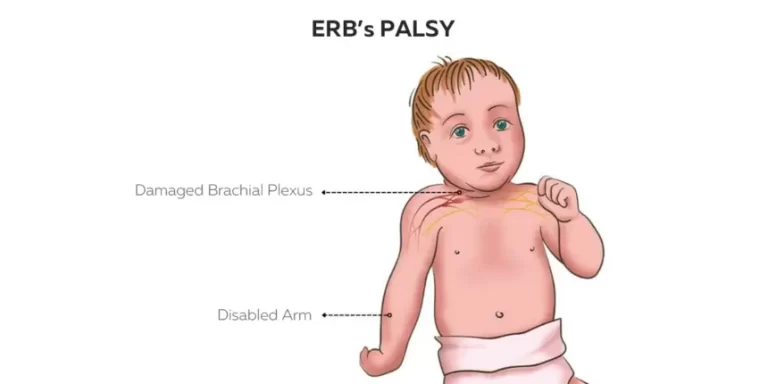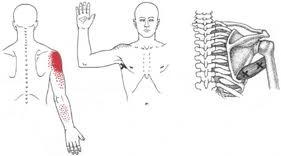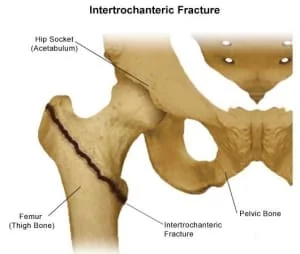10 Best Exercises For Radial Tunnel Syndrome
Introduction:
One of the three major nerves in your arm, the radial nerve, can become compressed, leading to the painful disease known as “radial tunnel syndrome.”
You should follow your doctor’s instructions to make sure that this exercise regimen is safe and beneficial for you. Consult your physician or physical therapist for advice on which exercises will best assist you in achieving your recovery goal.
To alleviate pain, try exercises that facilitate the radial nerve’s passage through the elbow tunnel. Pain and soreness in the forearm can also be reduced by strengthening and stretching the muscles. A well-planned exercise program for Radial Tunnel Syndrome will assist you in getting back to your regular activities, sports, and other hobbies that you enjoy.
Causes:
Overuse or Repetitive Use
- Repeated rotation of the forearms (pronation/supination)
- Regular clutching or extending of the wrist
Typical in:
- Construction work,
- Typing occupations
Anatomical differences
- In certain individuals, the nerve may be compressed by naturally occurring fibrous formations or tighter muscle bands in the forearm, even in the absence of trauma or repetitive exercise.
Trauma Directly
When the lateral side of the elbow or forearm is struck or falls, it can result in fibrosis, bruising, or swelling that compresses the nerve.
Complications Following Surgery or Fractures
- Following surgery, scarring or unusual healing (e.g., lateral epicondylitis operations)
- Anatomical deformation due to improperly healed radial head fractures or dislocations
Tumors or cysts
- Forearm noncancerous growths like lipomas or ganglion cysts can press against the nerve and cause issues.
The inflammation
Situations such as:
- Rheumatoid arthritis
- Synovitis
Signs and symptoms:
The pain
- Stiff and severe pain in the lateral elbow or proximal forearm
- Pain may radiate 3–5 cm below the lateral epicondyle.
Some Movements Make Symptoms Worse
The following causes pain to worsen:
- Resisted supination
- Resisted middle finger extension
- Using the arm and wrist repeatedly
Sensitivity
Maximum sensitivity over the radial tunnel, in particular:
- 4-5 centimeters apart from the lateral epicondyle
- There usually isn’t any noticeable redness or swelling.
Weakness
Minor weakness in:
- Extension of the wrist
- Extension of the fingers
- Extension of the thumb
- Pain or motor involvement can make grip strength feel weaker.
Each person experiences radial tunnel syndrome differently. While some people will have mild symptoms, others will have more severe ones. You should discuss any symptoms you may have had with your physician.
Exercise’s advantages:
Exercise therapy is essential to the conservative management of Radial Tunnel Syndrome when it is planned and overseen properly. Without requiring surgery, exercises are intended to lessen nerve compression, ease pain, and restore function.
Returns to Normal Function
- Restoring forearm and hand strength, endurance, and control is facilitated by progressive exercise.
Helps patients in going back to:
- Activities related to work
- Sports
- Daily tasks such as typing, lifting, and grasping
Reduces Pain
- By increasing blood flow, lowering inflammation, and re-establishing normal nerve activity, exercises help reduce pain sensitivity.
- Isometric and mild range-of-motion exercises help break the cycle of pain without making symptoms worse.
Increasing flexibility and range of motion
- Tense muscles and tissues around the radial nerve may cause compression.
- Gentle stretches and mobilization techniques help increase the flexibility of the wrist and forearm, relieving pressure on the nerve.
Builds Up Supporting Muscles
- Poor wrist and finger extensor muscle weakness might result in poor biomechanics and further radial nerve pain.
Strengthening that is intended:
- Enhances muscular balance
- Improves the stability of joints
- It lessens the need for compensatory strain
Lowers the Chance of Recurrence
The right rehabilitation programs:
- Ergonomic motion patterns
- Muscle stamina
- Tolerance of nerves
Avoids Atrophy and Stiffness
Inactivity caused by pain or a fear of moving can result in the following:
- Muscle atrophy
- Stiffness in the joints
- Formation of scar tissue
- Exercise keeps muscles healthy and preserves the range of motion.
It is important to consider these safety precautions before starting an exercise program:
A doctor or physical therapist will determine the ideal exercises for your specific issue. Before starting any health program, think about a few safety precautions and maximize the benefits.
When anything feels off, you should pay attention to what your body is telling you and not push yourself. Even while soreness is a typical side effect of exercise, excessive or ongoing pain may be a sign of overwork. Begin with low-impact workouts until you can handle pain better, and then progress to increasingly difficult ones.
By maintaining proper form and posture, repetitive injuries can be prevented. A doctor should be consulted if you are unsure about how to begin exercising correctly. When beginning any exercise, prepare your muscles and joints for the activity by warming them up.
Exercises For Radial Tunnel Syndrome:
Wrist Extension Stretch
- Start with the seating position on the chair.
- Then extend your arm.
- Then palm down.
- Your other hand should be used to lightly press on the fingers and back of your hand.
- The upper part of your forearm should feel tense.
- Maintaining a straight elbow.
- Hold this position for a few seconds.
- Then return to your neutral position.
- Then relax.
- Repeat these exercises 5 to 10 times.
 Wrist-Extensor-Stretch
Wrist-Extensor-Stretch
Ball squeeze
- Hold a tennis ball in your hand and wrap your fingers into a fist.
- For a little while, keep it tightly in your grasp.
- Next up is the squeeze ball.
- Then return to your neutral position.
- Then relax.
- Repeat these exercises 5 to 10 times.
 Full-Grip-exercise
Full-Grip-exercise
Wrist Flexor Stretch
- Stand Upright.
- Following that, raise your arm right in front of you.
- After that, palm up.
- Return your fingertips to the ground with a gentle push using your other hand.
- Stretch your forearm while keeping your elbow straight.
- Hold this position for a few seconds.
- Then return to your neutral position.
- Then relax.
- Repeat these exercises 5 to 10 times.
 wrist-flexor-stretch
wrist-flexor-stretch
Elbow Flexion
- First, settle into a comfortable position on the ground.
- As you raise your forearm, your elbow should be comfortably bent.
- Strengthening can be achieved by holding a lightweight dumbbell.
- Hold this position for a few seconds.
- Then return to your neutral position.
- Then relax.
- Repeat these exercises 5 to 10 times.
 elbow-bend-exercise
elbow-bend-exercise
Wrist Extension with Light Resistance
- This activity requires you to sit in a chair.
- Holding a two-pound dumbbell straight in your hand, rest your elbow on the table.
- Bending your wrist away from your body and pointing it downward will straighten it.
- If this workout is too hard for you, don’t use any weight.
- Hold this position for a few seconds.
- Then return to your neutral position.
- Then relax.
- Repeat these exercises 5 to 10 times.
 Wrist extension
Wrist extension
Wrist Supination and Pronation
- To begin, place your palm on the side.
- Slowly turn the palm to face up.
- Support your forearm by placing your elbow at a 90-degree angle and your wrist on your thigh.
- Adjust your elbow so that it is somewhat straight.
- Your arm should remain on your thigh.
- Return the palm gently to the starting position, then gently rotate it downward.
- Then return to your neutral position.
- Then relax.
- Repeat these exercises 5 to 10 times.
 Supination-and-Pronation
Supination-and-Pronation
Fist exercise
- Initially, the fingers should be pointed straight out.
- First, lower them into a hook and then raise them back up into a straight hand.
- Next, bend the joints of your fingers.
- After making a hook fist, straighten your hand once more.
- Now, with your thumb outside your fingers, make a full fist and then straighten your hand again.
- Finish by making a fist.
- Then return to your neutral position.
- Then relax.
- Repeat these exercises 5 to 10 times.
 Fist Exercises
Fist Exercises
Thumb flexion
- Start by extending your left hand in a straight grip with all of your fingers.
- Flex your hand so that your palm is facing your thumb.
- Apply pressure with your thumb to the tip of your little finger.
- You should not be concerned if you cannot reach your little finger.
- Put simply, extend your thumb as far as it will go.
- Hold this position for a few seconds.
- Then return to your neutral position.
- Then relax.
- Repeat these exercises 5 to 10 times.
 Thumb Flexion
Thumb Flexion
Radial Nerve Glides
- Stand with your arms at your sides.
- Using your fingers, reach down and flex the affected arm’s shoulder.
- Flip your arm so that the thumb is towards your body.
- Make sure your hand is pointing towards the ceiling by keeping your wrist straight.
- When you lean your head from your arm, make sure to extend it.
- Lift your arm, flex your wrist, and stretch it out from your body while keeping your head turned away.
- Hold this position for a few seconds.
- Then return to your neutral position.
- Then relax.
- Repeat these exercises 5 to 10 times.
 radial-nerve-glide-exercises
radial-nerve-glide-exercises
Biceps curl
- Start in a standing position that feels comfortable.
- Hold onto something light now, like dumbbells.
- Then keep your upper arm straight.
- Next, raise the weight at your elbow.
- Hold this position for a few seconds.
- Slowly lower your arm back down.
- Then return to your neutral position.
- Then relax.
- Repeat these exercises 5 to 10 times.
 Biceps curl
Biceps curl
Which preventative measures must be taken when exercising?
Before starting any activity, make sure you warm up thoroughly.
- A good warm-up relaxes muscles, improves blood flow, and lessens nerve pain.
- Spend five to ten minutes doing a mild cardiovascular activity, like cycling or walking.
Pay Attention to Pain-Free Range of Motion
- Healing might be slowed down by overstretching or squeezing the nerve.
- Don’t go beyond an activity range that doesn’t hurt.
Prevent Excessive Radial Nerve Stress Movements
- Repetitive supination or wrist extensions.
- Heavy lifting or grabbing.
- Straight arms pressing overhead.
- Jerky or forceful elbow motions.
When necessary, make use of supportive equipment.
- A counterforce strap or forearm brace could assist lessen pain when exercising.
- When performing repetitive chores, a wrist splint can help maintain wrist neutrality.
Use appropriate ergonomics and techniques.
- The radial nerve may be further compressed, and forearm strain increases by improper form.
- Hold your wrists in a neutral posture.
- Instead of locking out your elbows, keep them slightly bent.
Pay Attention to Your Body
- Nerve or pain signs indicate that you ought to stop or change.
- Avoid pushing through pain, as this frequently results in more time needed to recover.
Keep an eye on the degree of intensity and repeat level.
- Sets and repetition should be limited to prevent tiredness.
- Alternate rest days to prevent daily repetitive strain.
After working out, rest.
- Helps eliminate metabolic waste and heal inflamed tissue.
- Flexors and extensors of the wrist should be gently stretched.
When did you quit working out?
Increased pain during or after exercise
- In particular, pain in the outside wrist, elbow, or forearm.
- Sharp or increasing pain is a warning sign, although mild aches are normal.
Elbow or forearm swelling or inflammation
- Shows signs of irritation that could go worse with more exertion.
Decrease in coordination or strength.
- Particularly regarding wrist extension, finger mobility, or grip strength.
After an activity, symptoms may persist or worsen for 24 hours.
- You’re going overboard if your nerves become irritated slowly.
If you suffer from Radial Tunnel Syndrome, which workouts should you avoid?
Avoiding activities and exercises that can exacerbate the radial nerve or strain the forearm extensor muscles is crucial if you have Radial Tunnel Syndrome (RTS), particularly where the nerve travels through the radial tunnel (just below the elbow).
Repeated Wrist and Forearm Extensions
- Wrist curls, particularly those that are reversed
- Long-term typing or gripping activities
Exercises Using a Strong Grip or High Repetition
- Deadlifts Farmer’s carry, and kettlebell swings
- Gripping and raising repeatedly may worsen nerve pain.
Planks and Push-Ups
- The forearm extensors may be strained by activity.
Supination for Heavy Lifting (palm-up grip)
- The supinated grip pull-up
- Palm-up grip rows
Overhead Presses or Triceps
- Dips and overhead shoulder presses
How may radial nerve compression be prevented?
It is not possible to prevent every cause of radial nerve compression. However, there are a few actions you may take to lower your risk:
- Repetitive arm and wrist motions and prolonged pressure on the wrist and forearm should be avoided.
- Extend your arms and wrists. As a result, your muscles may become more flexible and mobile.
- When working, alternate between tasks requiring different motions and take breaks every few hours.
- Wear gloves to protect your fingers, hands, and wrists if you’re working outside because working in a chilly environment might make your joints more rigid.
- After everyday activities, applying a heat patch or a hot water bottle may help ease joint stiffness and muscular strain.
Summary:
A disorder known as “radial tunnel syndrome” creates pressure or compression on the radial nerve, resulting in paralysis and pain in the forearm and wrist. Radial tunnel syndrome may not be entirely cured by exercise, but it can help control its symptoms and increase general strength and flexibility.
Managing the pain associated with radial tunnel syndrome might make it difficult to continue with our everyday tasks. Your everyday routine, job, sports, and hobbies may all be impacted. Stop doing the things that are making your symptoms worse and give your arm some rest.
Together with proper posture and movement awareness, you can help reduce pain and enhance your general health by incorporating these exercises into your everyday routine. A physical therapist should always be consulted before beginning a new exercise program, especially if you have a specific injury or condition.
FAQ:
Which therapy is most effective for radial tunnel syndrome?
Exercise modification, medication for inflammation, and removable splints are the first nonoperative treatments for radial tunnel syndrome.
Does radial tunnel syndrome respond well to heat?
Rest, ice, and heat are the traditional therapy methods since they reduce inflammation and improve blood flow in the area.
Is weakness caused by radial tunnel syndrome?
Radial tunnel syndrome may be the cause of arm pain and weakening. It could become challenging to carry out daily tasks like moving your wrist or lifting objects.
Can someone with Radial Tunnel Syndrome engage in weight training?
Yes, but with some changes:
Stay away from exercises that require you to grip or extend your wrist repeatedly.
Make use of neutral grips and light weights.
To lessen the strain on the forearm, concentrate on strengthening your shoulders and posture.
Are activities involving nerve gliding beneficial for radial tunnel syndrome?
Yes. Radial nerve glides can assist increase nerve mobility and decrease compression, but in order to prevent irritation, they should be performed carefully and under a physical therapist’s supervision.
Should someone with radial tunnel syndrome stretch their forearm?
Yes, pressure around the radial nerve can be released by stretching the extensor muscles of the forearm.
Which symptoms indicate that I should quit working out?
Stop right away if you encounter:
A rise in pain
Feeling numb or tingly
A burning feeling along the arm
Loss of grip or strength
Radial Tunnel Syndrome: What causes it?
Typical reasons include:
Repeated movements of the forearm
Long-term holding or lifting Using the wrist extensor muscles excessively
Compression or direct injury close to the elbow.
Is it possible for radial tunnel syndrome to develop into a chronic illness?
If left untreated, radial tunnel syndrome can progress to a chronic illness. The probability of a complete recovery without surgery is considerably raised by early detection and care.
Who is at risk from radial tunnel syndrome?
Athletes (racquet sports in particular) Workers who do manual labor Poor ergonomics among office workers Individuals who use their upper limbs repeatedly
References:
- The American Academy of Orthopaedic Surgeons recommends a therapeutic exercise regimen for radial tunnel syndrome.
- What is Radial Tunnel Syndrome? Causes, symptoms, diagnosis, and therapy. (undated). Radial tunnel syndrome https://www.assh.org/handcare/condition
- Knight’s 2024 pain-relieving exercises for radial tunnel syndrome
- Syndrome of the Radial Tunnel. (n.d). Radial Tunnel Syndrome, Physiopedia. https://www.physio-pedia.com/







